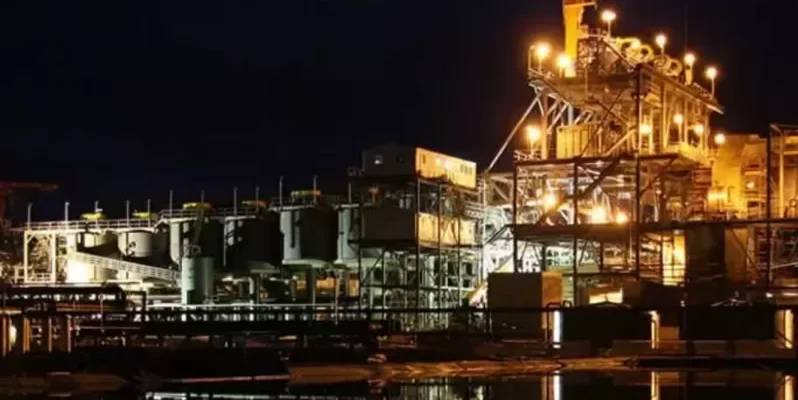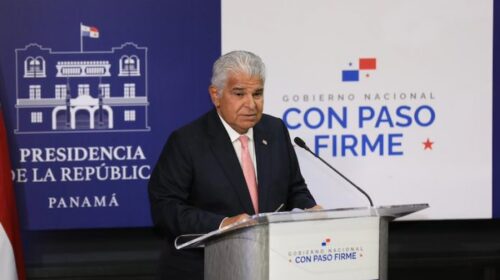Barrick’s Lumwana Copper Mine in Zambia Takes Strategic Steps Forward
Barrick’s drive to transform the Lumwana copper mine in Zambia into a Tier One asset with a life extending beyond 2060 is picking up speed, with a strong performance in the past quarter adding impetus to its continuing production ramp-up.
Briefing media at a site visit on July 7, Barrick President and Chief Executive Mark Bristow said the mine’s full potential was only now being revealed.
Additional expansion opportunities, identified through an updated geological model, are currently being assessed, while drilling at the Kababisa prospect highlights potential mining flexibility through higher grades.
The Lumwana pre-feasibility study is progressing in line with its plans to transform its long-term copper profile through the delivery of the envisioned super pit.
“Since Barrick refocused its strategy in Africa in 2019, Lumwana has become a key element in the expansion of our strategic copper portfolio and a significant contributor to our bottom line.
At the same time, its importance to Zambia has grown. Since 2019, it has contributed more than $2.3 billion to the country’s economy in the form of royalties, taxes, salaries, and purchases from local suppliers,” he said.
Barrick has a global policy of sourcing its suppliers locally, and last year it spent $432 million, 83% of its total procurement, with Zambian suppliers and contractors.
It has also launched a ‘Business Accelerator Program’ to build the capacity of Zambian contractors in the mining supply chain.
Similarly, Barrick is committed to local employment. Currently, 99.3% of Lumwana’s employees and 98% of its contractors are Zambian nationals, both industry-leading statistics.
Lumwana is a participant in the United Nations’ REDD+ project, which is designed to reduce greenhouse gas emissions from deforestation, and the mine has engaged with its communities on this initiative.
Looking at the mine itself, in the presentation accompanying the announcement, Barrick said that Lumwana is on track to achieve 2023 production guidance as the operation ramps up after the wet season, reopens the Malundwe pit, and smoothly transitions to owner miner operations.
There is also a plan to transition away from contract mining in 2023 – with an investment of US$115 million being allocated to the implementation of an owner miner waste stripping fleet.
Barrick recently stated: “During the fourth quarter of 2022, we began a transition to an owner miner fleet at Lumwana following a study which concluded that this option could result in a 20% cost reduction within the first five years versus contracted services.
Separately, an owner miner strategy positions the operation well for future potential expansions, including the Super Pit, which has the potential to extend Lumwana’s life into the 2060s.”
From the processing side, there has been continuous improvement of processing stability leading to higher throughput, and the mine is working to exceed the new base set as it moves into the second half of 2023.
Recovery has also stabilized following the higher blend of fresh ore from the pit as mining ramps up. Significant investment has been made over the last few years in the new fleet leading to continuous improvement in availabilities, with the latest batch coming into production in April 2023.
A new stripping fleet started arriving in Q2, which will continue throughout the year and is expected to see the stripping increase with the fleet arrivals.
Mining originally began at the Malundwe pit in 2008 by Equinox Minerals (Barrick acquired Equinox in 2011), and the operation ran successfully for some years as a trolley-assist mine, with trucks going up ramp to feed a primary gyratory, then the ore utilizing a 4.5 km conveyor to the plant.
The lower grade Chimiwungo or ‘Chimi’ pit (in fact now three separate South, Main, and East pits) some 7 km away was then developed starting with South in 2012 and a new primary gyratory crusher and its own 3.5 km conveyor built to allow the Chimi pit to feed the existing plant.
Malundwe and Chimi both operated for some years – Malundwe was higher grade but the initial pit closed due to being mined out, leaving only the Chimi operation. Malundwe is now set to be reopened and expanded.
Planned Lubwe starter pits to the north could potentially provide a high-grade, low strip ratio plant feed, further enabling the unlocking of the value within the envisaged Chimiwungo Super Pit and the potential 40-60 year mine life. Two other prospects – Kamaranda and Kababisa have potential as additional satellites. The Super Pit PFS began in Q4 2022.
The mine initially operated with a fleet of 31 Hitachi 254 t class EH4500 trucks and five 27 m3 EX5500 shovels – four of them face shovels and one backhoe.
Trolley assist was discontinued after mining moved from Malundwe pit. Barrick told IM that the main ramp to Malundwe is equipped with the trolley lines, which are still in place; however, the pantographs were removed from the EH4500 trucks as they are now operating under full diesel power.
The current EH4500 trucks are reaching the end of life, and a competitive fleet replacement tender was held in 2021 where the Komatsu 290 t class 930E-5 was selected as the main new fleet truck type, with the EH4500s gradually being phased out.
There are 15 of these running currently – the final new fleet will be a combination of 930E-5 and Hitachi EH5000 trucks – 30 in total. Four of the EX5500 shovels have been retired, and one remains. The mine now operates three Komatsu PC8000 and three PC7000 shovels.
With emissions targets set by Barrick, just like other top-tier miners, IM asked if there was any plan to look again at running a trolley line: “In line with our commitment to reduce greenhouse gas emissions, we are in close discussions with our technology partners and OEMs on how to substitute fossil fuel with renewables.
The feasibility of trolley assist is under investigation, and consideration of ramp design is part of the expansion PFS that is underway.”
Aside from adding new equipment, Barrick added that its people are its greatest assets, and training and upskilling are of cardinal importance.
“This process starts with modern simulators we acquired to ensure that we can pick those with the best potential and continuously hone their skills to ensure they get the best out of our new assets. We have also reviewed our maintenance practices in close collaboration with our OEMs and sister operations in NGM to learn from past experiences.”
SOURCE:https://im-mining.com
123 total views , 2 views today





